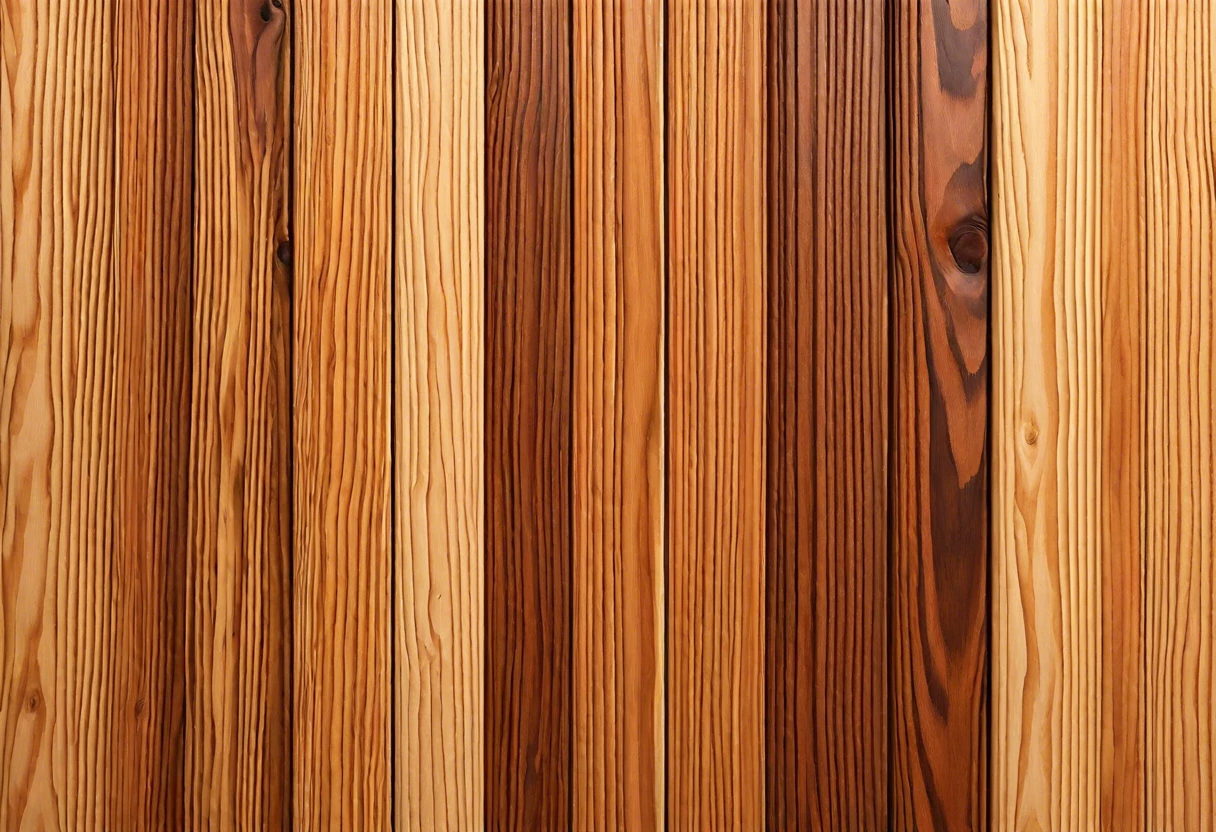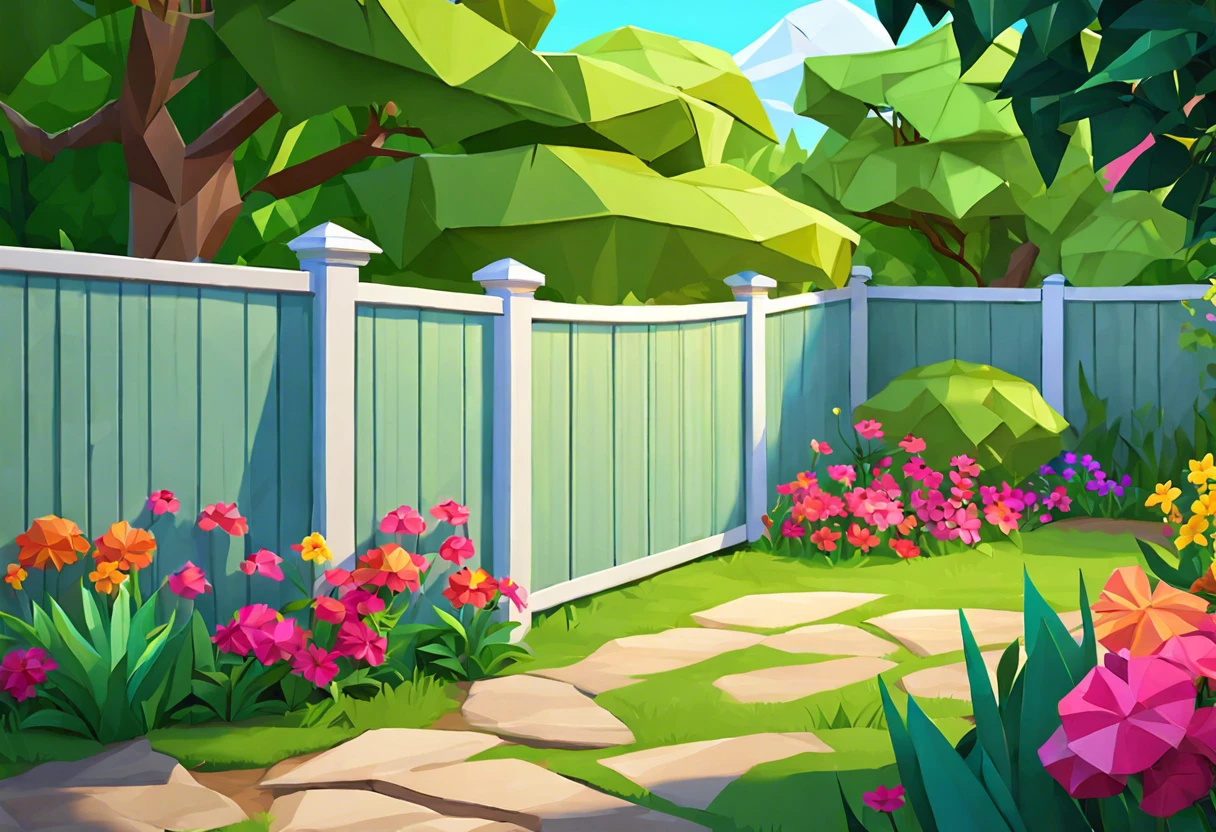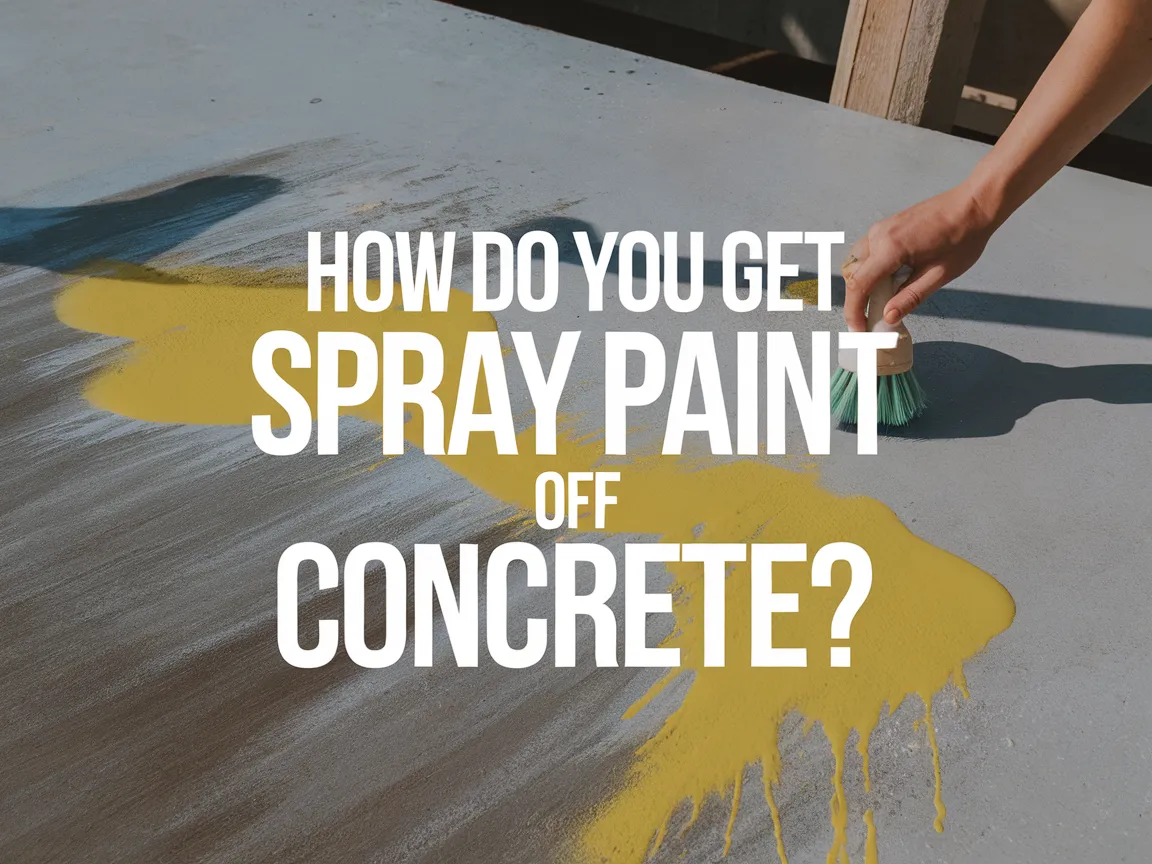Can You Paint Pressure Treated Wood Right Away?
Pressure treated wood is like a special superhero for your outdoor projects. It’s wood that’s been soaked in a magical potion to help it resist bugs and rot.
So, can you paint pressure treated wood right away? It’s super important to know this because painting too soon can ruin the finish. I once painted a fence right after installation, and the paint just peeled off. Bummer!
In this guide, we’ll explore essential steps before you start painting, how long to let pressure treated wood dry before painting, recommended paint types, common issues you might face, and creative DIY ideas for your pressure treated wood projects. You’ll learn everything about how soon can pressure treated wood be painted and more.
Contents
- 1 Can You Paint Pressure Treated Wood Right Away?
- 2 What is Pressure Treated Wood?
- 3 Essential Steps Before You Start Painting Pressure-treated Wood
- 4 Understanding the Drying Process of Pressure Treated Wood
- 5 Signs That Pressure Treated Wood Is Ready for Painting
- 6 Step-by-step Guide to Painting Pressure Treated Wood
- 7 Types Of Paints Suitable for Pressure-treated Wood
- 8 Factors Affecting Paint Adhesion on Pressure-treated Wood
- 9 Common Issues When Painting Pressure-treated Wood Right Away
- 10 Common Myths About Painting Pressure Treated Wood
- 11 Environmental Impact of Painting Pressure Treated Wood
- 12 Finishing Touches to Enhance Your Painted Pressure-treated Wood
- 13 Advanced Tips for Pressure-treated Wood Experts
- 14 Frequently Asked Questions About Painting Pressure Treated Wood
- 15 Conclusion: Best Practices for Painting Pressure Treated Wood
- 16 Useful Resources
Can You Paint Pressure Treated Wood Right Away?
No, you shouldn’t paint pressure treated wood right away. It needs to dry for at least 3 to 6 months. This wait time allows chemicals to evaporate, ensuring the paint sticks properly. Your final look will be much better! If you’re considering painting exterior wood surfaces like cedar siding, proper preparation techniques matter significantly.
What is Pressure Treated Wood?
Pressure treated wood is lumber infused with preservatives under high pressure. This process enhances its resistance to decay, insects, and weather, extending the wood’s lifespan by up to 20 years. If you’re considering painting your pressure treated wood, you’ll want to ensure proper preparation to achieve the best results before applying paint without sanding.
I often wondered if I could paint pressure treated wood right after installation. Eager to finish my projects, I painted my treated decking without waiting in the past.
It was very helpful for my backyard project last summer. Honestly, waiting to paint affects the outcome. Typically, you should let it dry for several months before applying paint. This timing ensures the best adhesion and protection. If only someone had told me how long to wait! Professional painters often recommend specific techniques for optimal results, and I discovered some great insights about painting materials and techniques.
Essential Steps Before You Start Painting Pressure-treated Wood
What do you need to prepare for?
- Brush or Roller: You’ll need a good brush, like a Wooster Softip, or a roller, such as the Purdy White Dove. It’s crucial for applying paint evenly on pressure-treated wood.
- Primer: Use an oil-based primer, like Zinsser Cover Stain, specifically designed for exterior use. It seals the wood to prevent moisture damage after painting.
- Sandpaper: Grab 120-grit sandpaper to smooth the wood surface. This ensures proper paint adhesion and a flawless finish.
- Cleaning Agent: Use TSP (Trisodium Phosphate) to clean the wood. This product removes residue, preparing the surface for better paint adhesion.
We have now covered necessary preparations before painting pressure-treated wood. Next, we will explore the drying process of this wood.
Also See: Can You Recycle Cardboard With Paint on It? Find Out!

Understanding the Drying Process of Pressure Treated Wood
Knowing how pressure treated wood dries is crucial for your painting project.
| Drying Stage | Description | Typical Timeframe |
|---|---|---|
| Initial Drying | Moisture evaporates from the outer surface; still wet inside. | 1-2 weeks |
| Secondary Drying | Internal moisture continues to evaporate; wood becomes stable. | 2-4 weeks |
| Complete Drying | Wood is ready for painting as moisture drops below 18%. | 3-6 months |
You should now have a good understanding of the drying process for treated wood. In the next part, we’ll discuss readiness for painting.
Signs That Pressure Treated Wood Is Ready for Painting
How can you tell when your wood is ready? Here are some easy signs to check.
- Dry Appearance: The wood should look dry and lighter in color.
- Absence of Moisture: Use a moisture meter; it should read below 15%.
- Absorption Test: Drip a small amount of water on the surface. If it soaks in, it’s ready.
- No Odor: A strong chemical smell indicates it’s still releasing treatment chemicals.
We’ve wrapped up the indicators showing when pressure treated wood is suitable for painting. Let us turn our attention to the step-by-step painting process.
Step-by-step Guide to Painting Pressure Treated Wood
Here are the essential steps to paint pressure treated wood after installation.
-
Assess the Wood’s Dryness
First, check if the pressure treated wood is dry enough for painting. Ideally, its moisture content should be below 18% to ensure proper paint adhesion and longevity.
Moisture meters work well for this. If it’s wet or humid outside, wait a week for drying, especially in sunny conditions.
-
Choose the Right Paint Type
Select a high-quality exterior paint or stain compatible with treated wood. Water-based options are preferable since they allow the wood to breathe and resist UV fading.
Look for paints with additives that resist mold and mildew. Spending a bit more now pays off in durability later.
-
Prepare the Surface Properly
Clean the surface by scrubbing dirt and grime with a stiff brush and mild detergent. Sand down any loose pieces or old finishes to create a smooth surface for painting.
Don’t skip this step—painting over dirt or loose particles can cause the paint to peel. I learned this the hard way!
-
Apply a Quality Primer
Applying a primer is key for paint adhesion. Use an exterior-grade primer for pressure treated wood to seal the surface and prevent the wood’s oils from bleeding through.
This step can significantly increase the longevity of your paint job. Aim for 1-2 coats of primer for the best results. Maintain a temperature range of 5-20 °C (40-70 °F) during application.
-
Paint the Wood With Care
Once the primer’s dry, gently sand it again to smooth any raised fibers. When applying paint, use even strokes to avoid drips and uneven coverage.
Use a high-quality brush or roller—it makes a difference in paint application and finish. I prefer lighter coats; 3 or 4 thin layers often outperform one thick coat!
So far we covered a step-by-step method for painting pressure-treated wood. Let’s look at suitable paint types for it next.

Types Of Paints Suitable for Pressure-treated Wood
Let’s discuss the types of paints: oil-based paint, latex paint, stain, and sealant.
-
Oil-based Paint
Oil-based paints create a durable finish and offer excellent adhesion. Wait at least 6 months for proper drying of pressure-treated wood before using this type.
-
Latex Paint
Latex paints are water-based and easier to clean up. They can be applied after 3-6 months of exposure, ensuring the wood is dry enough to hold the paint.
-
Wood Stain
Stains penetrate the wood, highlighting its natural grain. Wait at least 2-3 months before applying stain to ensure the pressure-treated wood is adequately cured.
-
Sealant
Sealants protect against moisture and UV rays. Normally, wait about 3 months before using sealants on pressure-treated wood.
I prefer using stain on pressure-treated wood. It enhances the wood’s character, and you don’t need to wait as long to apply it.
Factors Affecting Paint Adhesion on Pressure-treated Wood
What factors influence when and how you can paint pressure-treated wood?
-
Moisture Content: High moisture can prevent paint from adhering properly to the surface.
-
Wood Type: Different wood types absorb treatments differently, affecting the ideal waiting time.
-
Weather Conditions: Humidity and temperature can impact drying times and paint adhesion.
-
Treatment Chemicals: Residual chemicals can inhibit paint bonding; a waiting period may be necessary.
Common Issues When Painting Pressure-treated Wood Right Away
My friend painted pressure-treated wood too soon. The paint bubbled and peeled within weeks. Yikes! That wood needs a few months to dry and cure properly.
To fix it, wait at least 3 to 6 months. Then, use a moisture meter. Aim for below 15% moisture content before painting for a strong bond and lasting finish!
Common Myths About Painting Pressure Treated Wood
There are plenty of myths floating around about pressure treated wood. Let’s clear up some of the most common ones.
- Myth 1: “You can paint it immediately.” Fact: Painting too soon leads to peeling and flaking. Wait at least 3-6 months!
- Myth 2: “All pressure treated wood is the same.” Fact: Different treatments and wood types require different waiting times and paint types.
- Myth 3: “You don’t need to prime it.” Fact: Primer is essential for adhesion and longevity. Skip it at your own risk!
- Myth 4: “Once it’s painted, it’s maintenance-free.” Fact: Regular checks and touch-ups are key to a lasting finish and appearance.
Environmental Impact of Painting Pressure Treated Wood
It’s important to consider the environment when working with pressure treated wood.
| Aspect | Description | Environmental Concern |
|---|---|---|
| Chemicals Used | Pressure treated wood often contains copper and other chemicals. | Can leach into soil, potentially affecting plants and wildlife. |
| Paint Selection | Using eco-friendly paints and stains is a better choice. | Minimizes harmful runoff and pollution. |
| Waste Disposal | Leftover paint and wood must be disposed of properly. | Improper disposal can contaminate land and water. |
Finishing Touches to Enhance Your Painted Pressure-treated Wood
After ensuring the surface is clean, apply a quality waterproof sealer like Sherwin-Williams SuperDeck. This helps repel moisture and extends your paint’s durability by 25%.
Advanced Tips for Pressure-treated Wood Experts
To optimize adhesion, use a primer with zinc particles. This enables a bond in damp weather, with ideal temperatures between 10°C and 32°C (50°F and 90°F).
Frequently Asked Questions About Painting Pressure Treated Wood
How Long Should You Wait Before Painting Pressure Treated Wood?
You should wait at least 3 to 6 months before painting pressure treated wood. This waiting period allows the wood to dry and release chemicals from the treatment process, ensuring better paint adherence.
What Type Of Primer Should Be Used on Pressure Treated Wood?
You should use an oil-based primer on pressure treated wood. Oil-based primers create a strong barrier, effectively sealing the wood and enhancing paint adhesion for long-lasting results.
Can I Use Water-based Paint on Pressure Treated Wood?
No, you shouldn’t use water-based paint on pressure treated wood without first applying a suitable primer. Water-based paint may not adhere well, leading to peeling and breaking down, reducing the wood’s life. If you’re considering painting cedar or other wood surfaces, painting techniques vary by wood type.
What Happens if I Paint Pressure Treated Wood Too Soon?
If you paint pressure treated wood too soon, you’ll likely face poor adhesion. Moisture and chemicals trapped within the wood can cause the paint to crack, peel, or blister, ruining the finish and wasting your effort. When transforming surfaces like wood or even brick, proper preparation is key to achieving a durable painting techniques for surfaces.
How Long Does Pressure Treated Wood Need to Dry Before Painting?
Pressure treated wood needs a drying period of at least 1 to 3 months before painting, depending on climate and moisture levels. This ensures all treatment chemicals evaporate and the wood is primed for painting. If you’re considering painting an exterior surface like a brick home, painting exterior surfaces requires careful preparation.
Also See: Can Google Identify a Painting? Yes, Using AI Tools.
Conclusion: Best Practices for Painting Pressure Treated Wood
I’m glad we could cover this together. We discussed what pressure treated wood is, the essential steps before painting, a step-by-step guide to painting, recommended color palettes, types of suitable paints, factors affecting paint adhesion, common issues when painting right away, finishing touches, inspection techniques, advanced tips, and creative DIY project ideas.
In conclusion, while you may be eager to paint pressure treated wood, waiting a few months for proper drying is advisable to ensure the best results. Should you have any further questions, I’m here to assist with your painting projects related to pressure treated wood.
For more insights on techniques, tips, and best practices, visit Paint Answers.
Useful Resources
- Edwards, B. (2012). Drawing on the Right Side of the Brain. New York, NY: TarcherPerigee.
- Should You Wait Before Painting Pressure Treated Wood? — Mark’s Painting
- r/Decks on Reddit: Can you paint treated lumber immediately after install?
Experienced interior designer with 15+ years in transforming spaces, blending artistry with expertise in color and design. Rhode Island School of Design graduate, specializing in restorations and modern makeovers.
Material, Wood




